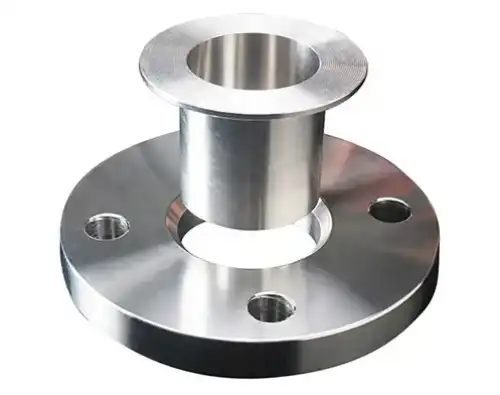What is a slip-on flange?
A slip-on flange is a flange that is loosely attached to the flange of a container or pipe. Flanges are parts that connect shafts and connect pipe ends; they are also used as flanges on equipment inlets and outlets, which are used to connect two pieces of equipment. A slip-on flange is a loose flange. The flange can be made by flanging, direct turning, or welding a ring.
Production material: carbon steel, low alloy steel, stainless steel, etc. Flange cover

Advantages:
1. Cost savings. When the pipe material is special and expensive, the cost of welding flanges of the same material is high.
2. It is not easy to weld or process or requires high strength. Such as plastic pipes, fiberglass pipes, etc.
3. It is easy to construct. For example, when connecting, a slip-on flange is not easy to align the flange bolt holes or prevent the flange bolt holes from changing when replacing equipment in the future.
Disadvantages:
1. Low pressure resistance.
2. Low strength at the welding ring (especially when the thickness is less than 3mm)
Connection method
Flange connection is an important connection method for pipeline construction.
A Flange connection is to fix two pipes, pipe fittings, or equipment on a flange plate first, add a flange gasket between the two flange plates, and fasten them together with bolts to complete the connection. Some pipe fittings and equipment already have flange plates, which also belong to flange connections.
Depending on the different levels of pressure, flange gaskets also have other materials, ranging from low-pressure asbestos gaskets, and high-pressure asbestos gaskets to metal gaskets.
The Flange connection is easy to use and can withstand greater pressure.
In industrial pipelines, flange connection is widely used. In the home, the pipe diameter is small and the pressure is low, so the flange connection is not visible. If you are in a boiler room or production site, there are pipes and equipment with flange connections everywhere. A Flange connection is to fix two pipes, pipe fittings, or equipment on a flange plate first, add a flange gasket between the two flange plates, and fasten them together with bolts to complete the connection. Some pipe fittings and equipment already have flange plates, which also belong to flange connections.
Pay attention to the connection, especially when tightening the bolts, to make sure that all the bolts are tightened equally.
What is the difference between a slip-on flange and a carbon steel flange?
A flange made of carbon steel is called a carbon steel flange, which is a connection device for two large-diameter pipes, usually two flanges plus, many fastening bolts. A carbon steel flange is a flange made of carbon steel. Low-carbon steel has good plasticity and low strength. After adding an appropriate amount of carbon element, it will become hard, the plasticity will decrease and the strength will increase. Flange connections may need to withstand very high tensile, compressive, torsion, and shear strengths, and carbon steel flanges are a good choice.
A slip-on flange is a movable flange, which is generally equipped with water supply and drainage accessories (most common on expansion joints). When the manufacturer leaves the factory, there is a flange at each end of the expansion joint, which is directly connected to the pipes and equipment in the project with bolts. That is, the flange with a slip-on is generally used on pipes. In that case, the pipes on both sides can be rotated by loosening the bolts, and the pipes can be disassembled and assembled more conveniently by tightening them.











